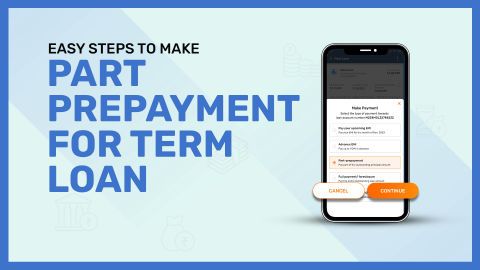If you're a Chartered Accountant (CA) managing your finances through a loan, it's crucial to understand the implications of ECS (Electronic Clearing Service) return charges. ECS is a convenient method that automates loan EMI payments directly from your bank account. However, if there are insufficient funds or technical issues on the scheduled EMI date, the ECS request may get rejected—resulting in a returned transaction. This isn't just a minor hiccup; financial institutions often impose ECS return charges, which can range from ₹200 to ₹500 per bounce, depending on the lender's policies. These charges can accumulate if multiple returns occur, affecting your credit score and potentially leading to legal complications. For CAs juggling personal finances and professional responsibilities, being aware of ECS return charges helps avoid unnecessary penalties and ensures smooth loan servicing. This article explores everything you need to know about CA Loan ECS return charges, including causes, consequences, and prevention tips.
What causes ECS returns in CA loan?
Electronic Clearing Service (ECS) is a system that allows automatic debit of your loan EMIs from your bank account. For Chartered Accountants (CAs), ECS simplifies financial management by ensuring timely payments without manual intervention. However, ECS returns can still occur, and understanding the causes is essential to avoid penalties and protect your credit score.
- 1. Insufficient funds: The most common reason for ECS returns in CA loans is insufficient balance in the linked bank account on the EMI due date. If the account does not have the required amount when the ECS is presented, the bank declines the transaction, leading to a return. This not only attracts ECS return charges but can also trigger late payment fees and affect your credit history.
- 2. Signature mismatch or mandate issues: ECS transactions require a valid and registered ECS mandate with accurate details and signatures. If there's a mismatch in the signature or incorrect mandate information submitted during loan processing, the ECS request may get rejected. CAs should ensure all paperwork is properly filled and verified.
- 3. Technical errors: At times, ECS returns are triggered due to technical glitches, either at the bank’s end or the lender’s system. Network issues, server downtimes, or mismatches in account details can disrupt the automatic deduction process. Though rare, these technical failures can still result in ECS bounce charges.
- 4. Closed or dormant account: If the ECS is linked to a bank account that has been closed or has become dormant, the ECS transaction will not go through. CAs switching bank accounts or changing their primary financial institution must update their ECS mandate accordingly.
- 5. Bank holidays or transaction timing issues: Sometimes, ECS transactions scheduled on bank holidays or processed outside banking hours may face delays or rejections. Although most ECS systems are now aligned with national holidays, such timing issues can still affect loan repayment schedules.
Understanding these causes enables CAs to take preventive measures, such as maintaining sufficient balance, updating ECS mandates, and monitoring bank communication regularly.
How CA loan ECS return charges are calculated
ECS (Electronic Clearing Service) return charges on CA loans are essentially penalty fees imposed when the automatic EMI deduction fails. These charges vary by lender and depend on multiple factors. Here's a breakdown:
- Flat fee basis: Most banks or financial institutions levy a flat fee for every ECS bounce. This typically ranges between ₹200 to ₹500 per transaction, irrespective of the EMI amount.
- Frequency of returns: Repeated ECS bounces within a short span may attract higher charges or compounded penalties, especially if the lender considers the customer a high-risk borrower.
- Loan type and tenure: The nature of the loan (secured or unsecured) and its repayment schedule can also influence how charges are structured. Some long-term loans may have slightly relaxed penalties compared to short-term loans.
- GST and other taxes: ECS return charges are often subject to GST. So, a ₹300 charge may come with additional GST, increasing the final amount payable.
Common Reasons for ECS Returns
- Insufficient balance: The most frequent cause — your bank account doesn’t have enough funds to cover the EMI on the scheduled date.
- Wrong ECS mandate details: Inaccurate account numbers, IFSC codes, or a mismatch in signature can result in rejection.
- Dormant or closed bank account: If your ECS is linked to an inactive or closed account, the transaction will be declined.
- Technical or bank server error: Sometimes, failures occur due to technical glitches in the banking network or the lender's processing system.
- Bank holidays or timing issues: If the ECS date coincides with a bank holiday or is set for late hours, it may delay or bounce the transaction.
How to avoid ECS return charges on your CA loan?
- Maintain sufficient balance: Always ensure that your account has enough funds a day before the EMI due date.
- Set up alerts or reminders: Use banking apps or calendars to set reminders for EMI deductions to avoid last-minute surprises.
- Verify ECS mandate details: Double-check your ECS mandate when submitting loan documents. Any errors can lead to transaction failure.
- Avoid linking dormant accounts: Ensure the ECS is tied to your active and frequently used bank account.
- Communicate with lender promptly: If you foresee a delay in payment, inform your lender in advance to explore alternative arrangements.
- Opt for auto-sweep or overdraft facilities: Linking your loan account to an auto-sweep or overdraft-enabled savings account can act as a buffer.
Being proactive helps Chartered Accountants avoid unnecessary penalties and ensures smooth repayment of CA loans.
How to resolve ECS returns on your CA loan?
Experiencing an ECS return on your CA loan can be concerning, but it is resolvable with timely action. Promptly addressing the issue not only prevents further penalties but also safeguards your credit score. Here’s how you can effectively resolve ECS return issues:
Contact your bank for solutions
- Speak to a bank representative immediately: As soon as you receive a notification about an ECS return, contact your bank to understand the specific reason for the rejection.
- Request a detailed transaction report: Ask for the ECS return memo or report, which outlines the cause of failure—be it insufficient funds, mandate issues, or technical glitches.
- Clarify your bank account status: Check whether your account is active, linked correctly, and has no restrictions or holds that may be causing the ECS failure.
- Raise a service request: If the failure was due to a technical error, lodge a service request for investigation and resolution.
- Confirm re-presentation policy: Some banks automatically represent ECS within a few working days. Confirm if this applies to your account to avoid manual intervention.
Correcting insufficient funds or account details
- Deposit funds promptly: If the ECS failed due to a low balance, deposit the required EMI amount immediately to avoid late payment charges or multiple ECS return penalties.
- Update account details with the lender: If your ECS was linked to an outdated or incorrect account, request your lender to update the bank account details by submitting a fresh ECS mandate form.
- Cross-check mandate validity and signature: Ensure your ECS mandate is correctly filled, signed, and active. Any mismatch in signatures or outdated mandate can lead to returns.
- Switch to a more reliable account: If recurring issues arise with a particular bank, consider switching your ECS mandate to a more stable and frequently used account.
- Set up a standing instruction as backup: Some lenders allow standing instructions (SI) through debit cards or net banking. This can serve as an alternative if ECS fails repeatedly.
- Monitor future transactions: Keep a close watch on the next ECS attempt. If resolved properly, the subsequent EMI deduction should occur without issues.
Taking proactive steps not only resolves the ECS return but also ensures that your CA loan account remains in good standing.
Legal implications of ECS return charges
ECS (Electronic Clearing Service) is a widely used method for automating EMI payments on loans, including CA loans. While convenient, an ECS bounce—especially repeated ones—can lead to legal consequences beyond just financial penalties. Here are the key legal implications every borrower should be aware of:
- 1. Breach of loan agreement: When you sign a loan agreement, you commit to paying EMIs on time. An ECS return is considered a violation of this agreement, giving the lender legal grounds to initiate recovery action.
- 2. Negative credit score impact: ECS returns are reported to credit bureaus like CIBIL. Multiple bounces can significantly reduce your credit score, making it harder to get future loans or credit cards.
- 3. Legal notice under section 138 of the negotiable instruments act: Just like a bounced cheque, an ECS return can result in legal action under Section 138, which deals with dishonour of payments. The lender may issue a legal notice demanding payment within a stipulated time.
- 4. Recovery through arbitration or civil court: If ECS bounces continue, the lender may escalate the case to an arbitrator or a civil court to recover dues. This could lead to court appearances and legal expenses.
- 5. Debt recovery agency involvement: Repeated ECS returns may lead to the account being transferred to recovery agents. These agents are legally permitted to contact you for repayment but must follow RBI guidelines on ethical collection practices.
- 6. Possible freezing of bank account: In extreme cases and with proper legal backing, lenders may get a court order to freeze the borrower’s bank account to recover outstanding dues.
- 7. Loan recall notice: After repeated ECS failures, the lender may issue a “loan recall notice,” asking for the entire outstanding loan amount to be paid at once—ending the EMI structure.
- 8. Loss of access to online repayment options: Borrowers with a poor ECS record may lose access to smoother repayment tools likeECS payment mode orquick payment portals.
To avoid these legal complications, ensure that your ECS-linked account is well-funded and always up to date. Legal consequences can escalate quickly, so proactive resolution is crucial for CA loan borrowers.
Conclusion
Understanding ECS return charges on your CA loan is essential to maintaining financial discipline and avoiding unnecessary penalties. These charges not only impact your wallet but can also harm your credit score and lead to legal consequences if left unresolved. By being aware of the common causes—such as insufficient funds, incorrect mandate details, or technical errors—you can take proactive steps to prevent them. Maintaining sufficient balance, updating ECS mandates, and staying in touch with your lender are simple yet effective ways to ensure smooth loan repayments. Responsible financial management ensures your CA loan journey remains stress-free and efficient in the long run.




